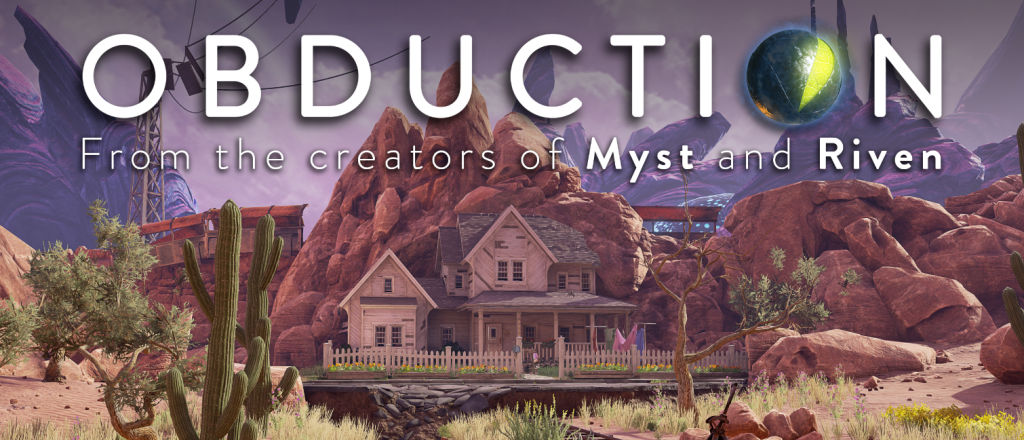Developer: Cyan Worlds | Released: 2016 | Genre: Adventure, First Person
This was a non-linear first person adventure made by the creators of Myst and its many sequels. I was a backer when it was announced as a Kickstarter campaign a few years ago. Although Obduction has its own story that doesn’t have anything in common with Myst, it didn’t take long before I discovered that it was very much a spiritual kinsgame. Cyan Worlds didn’t stray away from their field of excellence.
In this game, the big domes replaced the ages (or islands) in Myst, but they were just as environmentally diverse, and the world got bigger and more prone to me getting stuck, the more doors I unlocked.
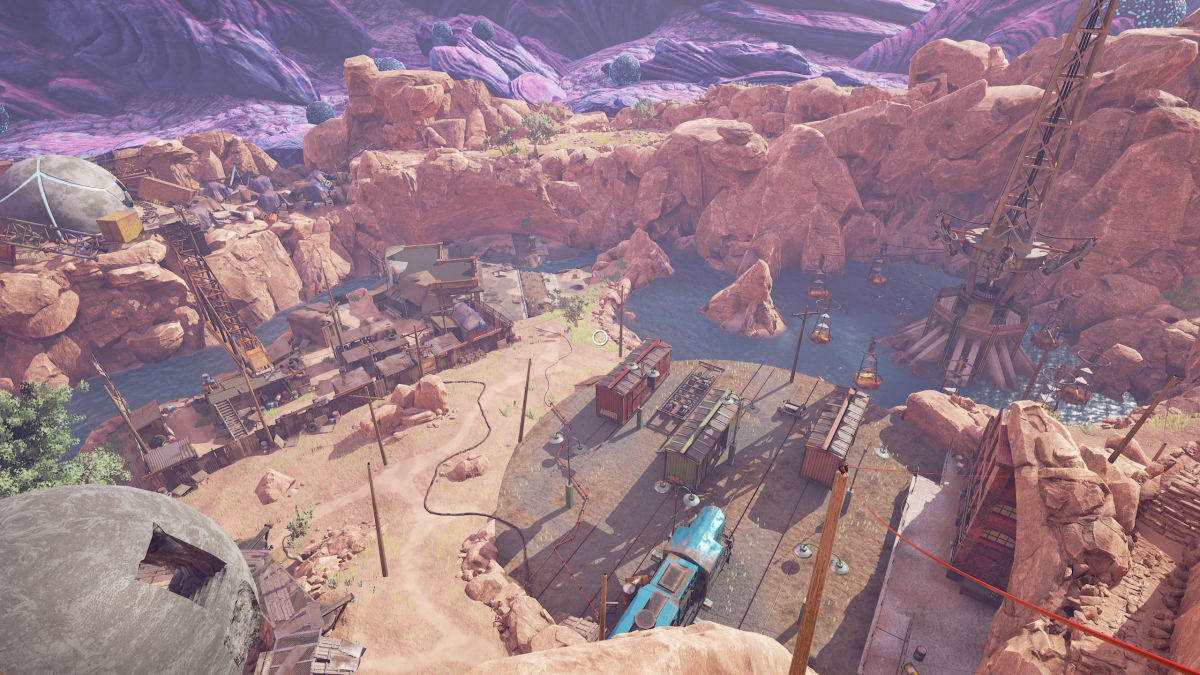
After a quick abduction I arrived in a sandy canyon with bubbly pieces of human structures from various points of recent human history. A cute network of trolley rails were intersecting it all, and there were a lot of locked doors. No humans, except C.W., who only mentioned very broad tasks through a door window whenever I had made substantial progress. I had to figure out almost everything on my own.
It took me about 20-21 hours to complete this game. It could have been done in about 12-15 hours, but I was stuck for several hours on a couple of occasions. The world got quite enormous when there were three alien domes to navigate between. After unlocking a few doors and getting the trolley running on the rails, the general puzzle mechanic was almost always finding and opening more stuff.
Actual stationary puzzles were far between, but they did turn up on a rare occasion.
The general thread of the game was to first enable access between domes (until then their surfaces worked like force fields instead of passages) and then use a multitude of teleporter spheres scattered throughout the world. The teleporters had a handle to activate the sphere and then a button to teleport to some other part of the world. Usually in another dome. It looked good too – big dots swirling around.
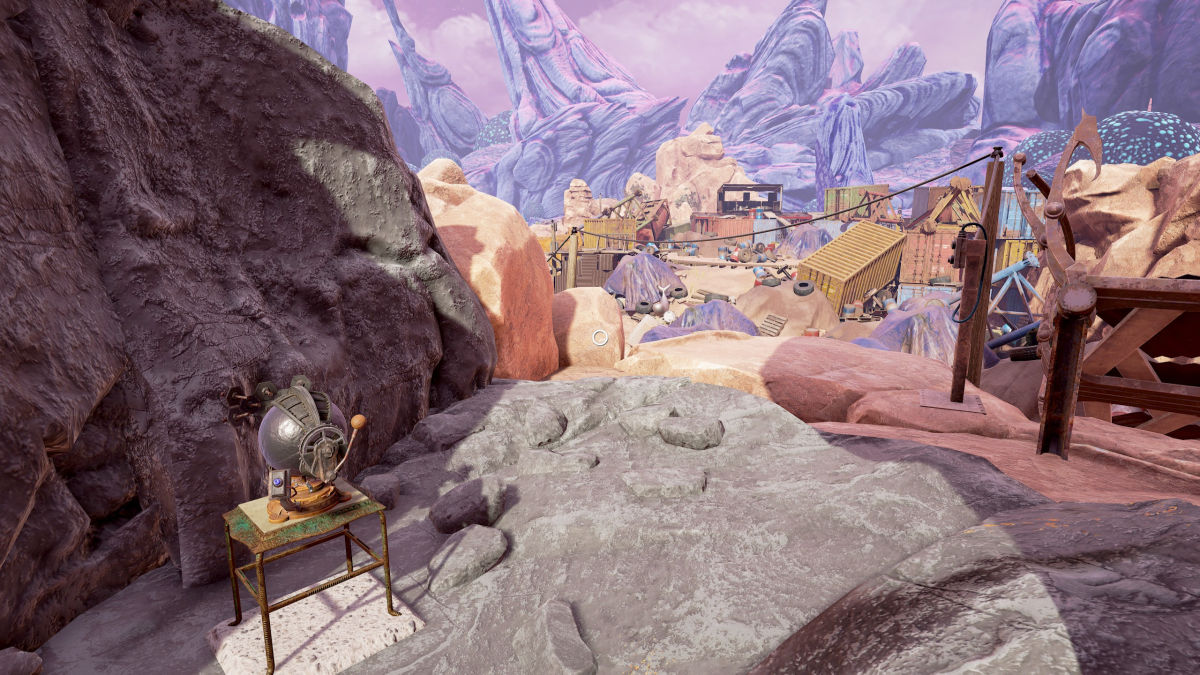
Unfortunately this also meant loading, and it typically took about 15 seconds each time on my PC.
As the game progressed and more teleporters were found, waiting for these to finish loading ate a fair portion of the total playing time. There was even a rotating maze a one point that really tested my patience regarding these teleporters. Luckily this was made up for by beautiful and often surrealistic dome worlds with a level of detail that made good use of the Unreal 3D engine. It was often breathtaking.
Particulars
Humans were seen in the form of prerecorded and quite noisy “air movies” shown with an alien device that had a human button on it. Both these as well as C.W. through the door had tinny and distorted voices.
I could take pictures with a button and look at them later for clues, but it involved fading to the title screen and navigating a gallery that didn’t even have browse buttons. Taking my own notes was better.
It was also possible to pick up certain objects, turn them around, and maybe even open something up. It was mostly just used for looking at children’s toys up close. There were many books and papers to read, however, and they were in the same style as found in the Myst games.
Yes, including diaries.
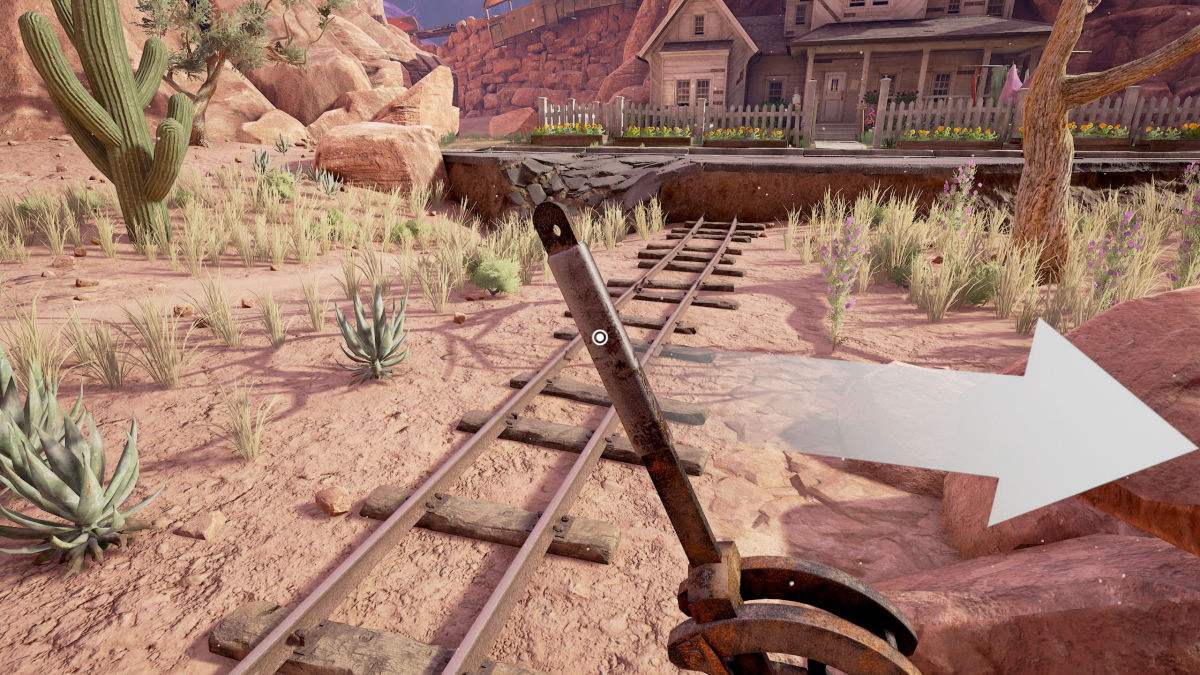
Obduction used the same design idea as in the Amnesia games by activating levers either by dragging or twisting them around with the mouse. I liked the addition of the directional arrow appearing.
It was possible to choose between free walking everywhere, or using old fashioned “node” sphere point-and-click like in the later Myst games. I got stuck in the geometry at one point, but temporarily switching to the point-and-click method automatically bumped me out of that bind.
Walking was completely useless in this game. Running had a small acceleration and was always on.
The trolley could go forwards or backwards, and it was equipped with a blue laser in front. Turning this on made it possible to orient the laser towards the target. It was a flip switch; driving or shooting. The laser only worked on Mofang technology and was ignored by everything else. This served two purposes – either to zap Mofang rocks blocking mine entrances, or zap a red laser pointing into the roof of a dome.
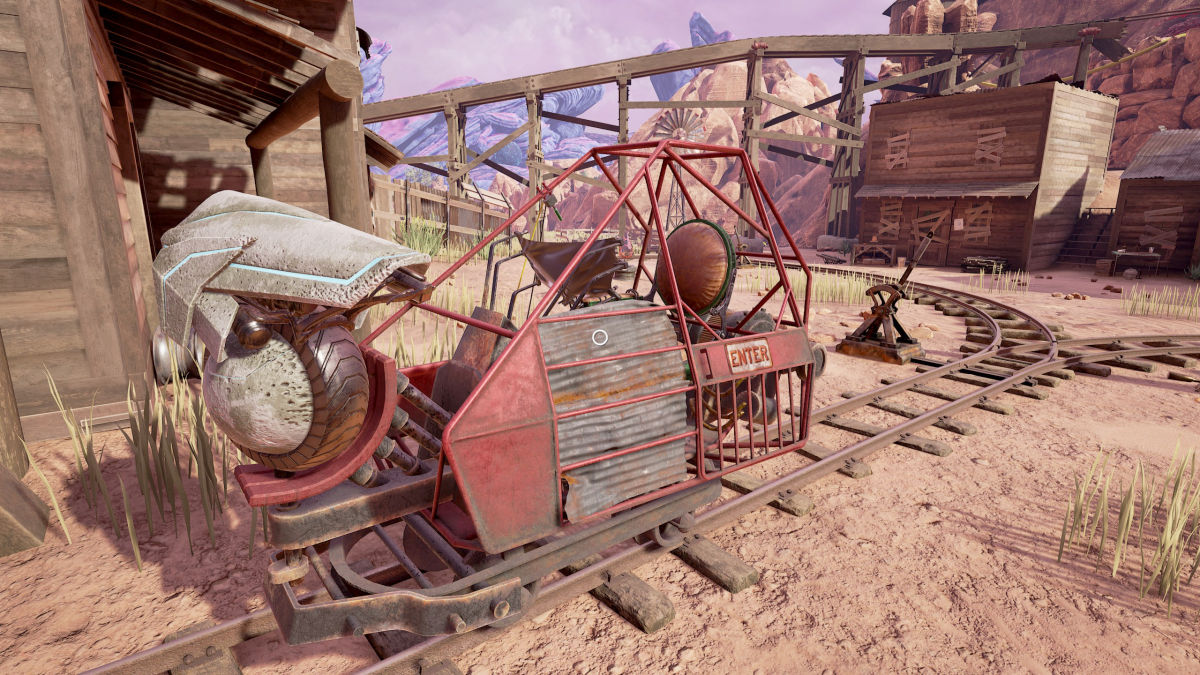
As soon as the red laser was no longer zapping the inside of a dome, the dome transformed into making passages possible instead of acting like a force field. This had to be done in each of the three first domes. Two of the domes could be handled with the trolley (teleporting a bit of the rails was required for one) while the third was handled using a directional joystick mounted on a white alien cabin.
Remember the strong craving for relieving yourself, like finally getting something to drink after having been thirsty for too long? That’s about how it felt when I finally found the circular set of rails near the garage area where I could turn my trolley around. It had a blue laser in front but it couldn’t turn backwards, so I had to be aligned in the right way to shoot at the rocks or lasers found on my way.
And while I’m on the subject of the trolley – the thumping sound of driving on the rails was excellent.
Finding the submarine was a bit of an anticlimax. There was nothing to do there at all – it just served as an explanation of the place C.W. lived in. But it sure looked cool.
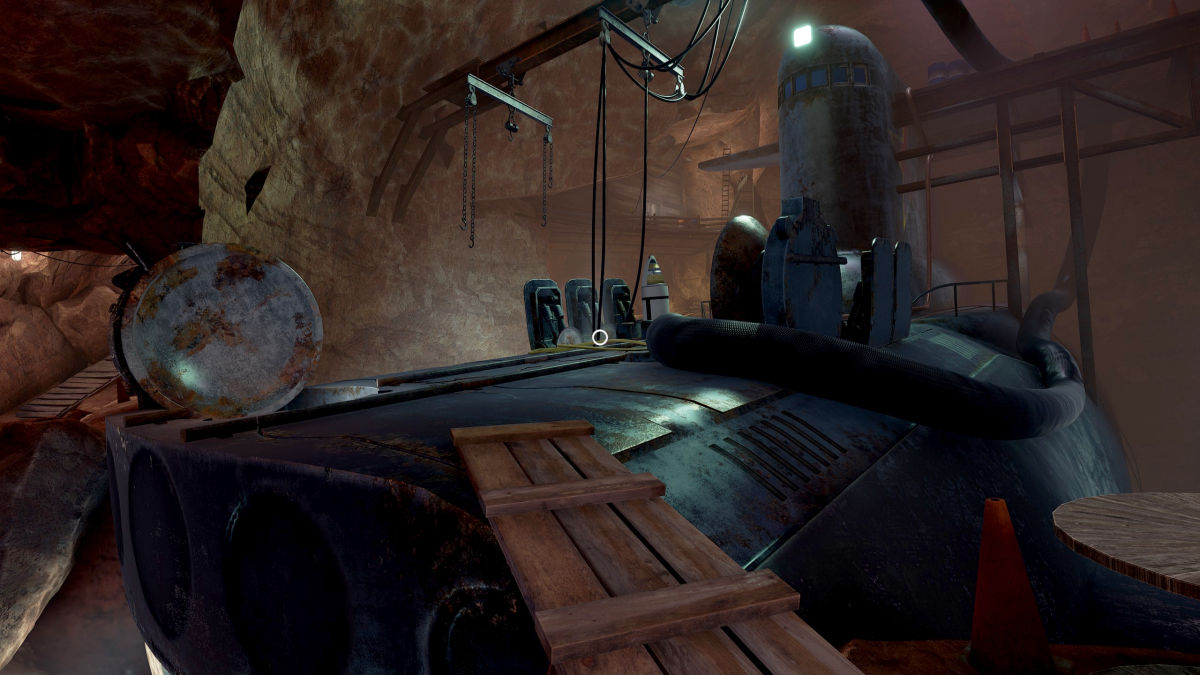
After the entry dome of the humans (Hunrath) the second dome I entered was the rocky world of Kaptar with gray cliffs and crevices. Lots of big wheels, gears, enormous chains, dormant pistons and staircases carved directly out of the rock. I had to activate a giant wind chasm engine and then connect four pistons to transfer momentum to the surrounding machines. This enabled sideways lifts and elevators.
Enabling the pistons was the first time I was stuck. It took a while before I noticed how they connected.
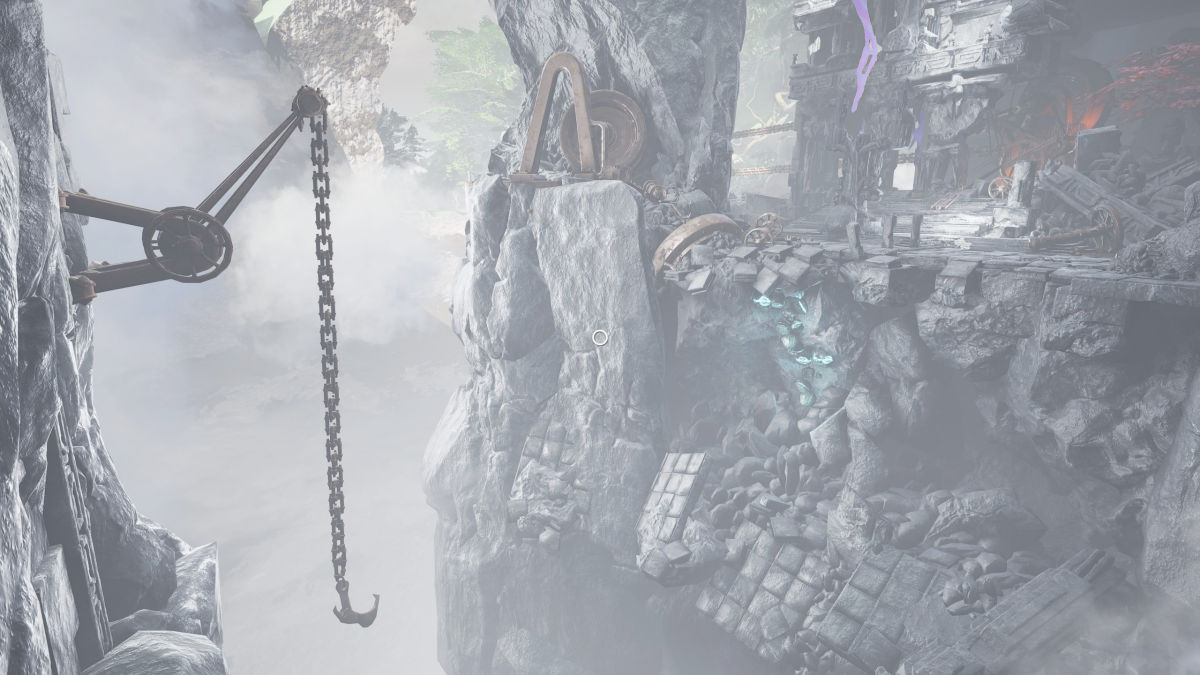
The enormous chasms of Kaptar, with staircases and makeshift wooden planks above endless depths, might sound like a strong contender for my recent post about vertigo-inducing games, but Obduction made ardent use of invisible walls everywhere to prevent the player from dropping down (either accidentally or to cut a corner) and that took the edge off this sensation.
Amidst all the exploration, establishing new connectivity and barely finding any mechanical puzzles, there was one exception that stood out like a sore thumb. It was a control box attached to a seesaw ladder I really wanted to be lowered down. It looked like something that belonged in a nuclear power plant.
Tons of levers and buttons and knobs and lamps.
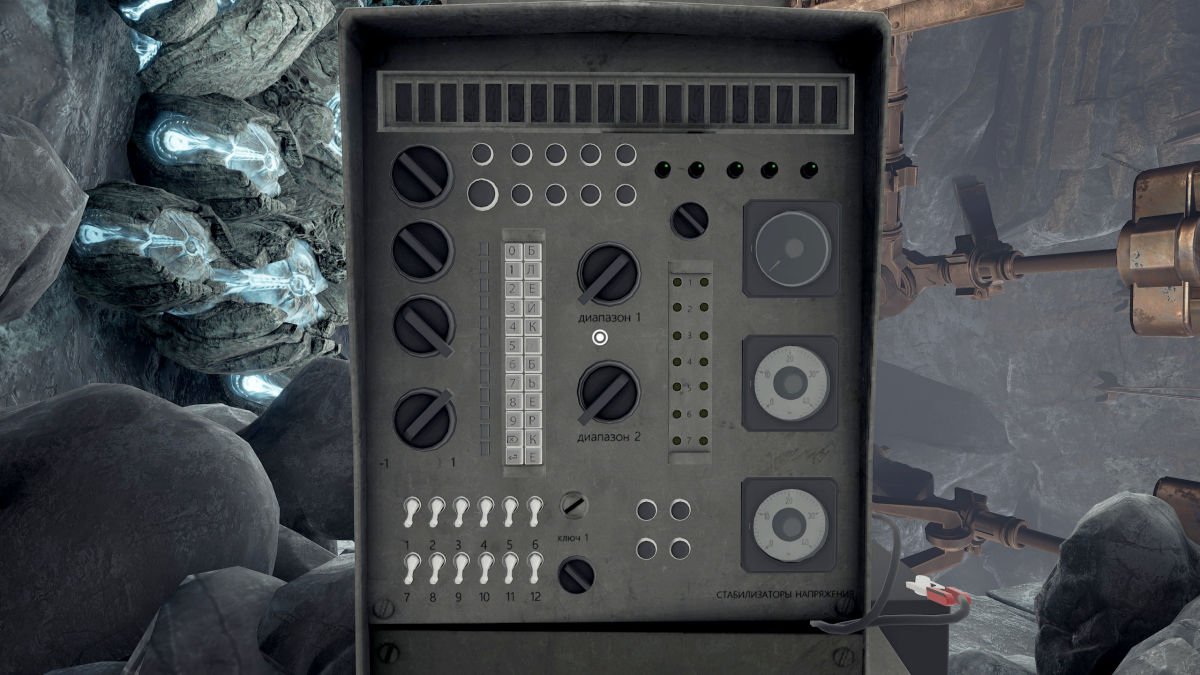
I’m happy to boast about not wasting too much time fiddling with the controls of this thing. I did soon get a suspicion that something was off. Much later I gained access to the ladder from a different direction, and a simple button then lowered it by using the control box as a counterweight! That actually had me smiling from ear to ear. It was a joke. A red herring.
Well played, guys.
Later I could even get an achievement for typing in a code that smashed it to the ground. Strangely that didn’t break the controls and lamps on the thing, though. It was made in Russia. Sturdy stuff.
After opening the garage, I gained access to an alien number device attached to a human cash register for converting numbers both ways. The alien device required me to drag lines between dots and made for a Quaternary (base-4) system. Such panels were later seen in the lush jungle dome of Maray. Steps of bridges could be generated out of thin air using the right number.
Later, pods with slumbering humanoids could be checked out by using numbers out of a human book found nearby. It was some sort of storage facility with a deep shaft, covered with rows of pods that a grab mechanism could pull out. Apparently it was just to impress me, though. No gamey purpose.
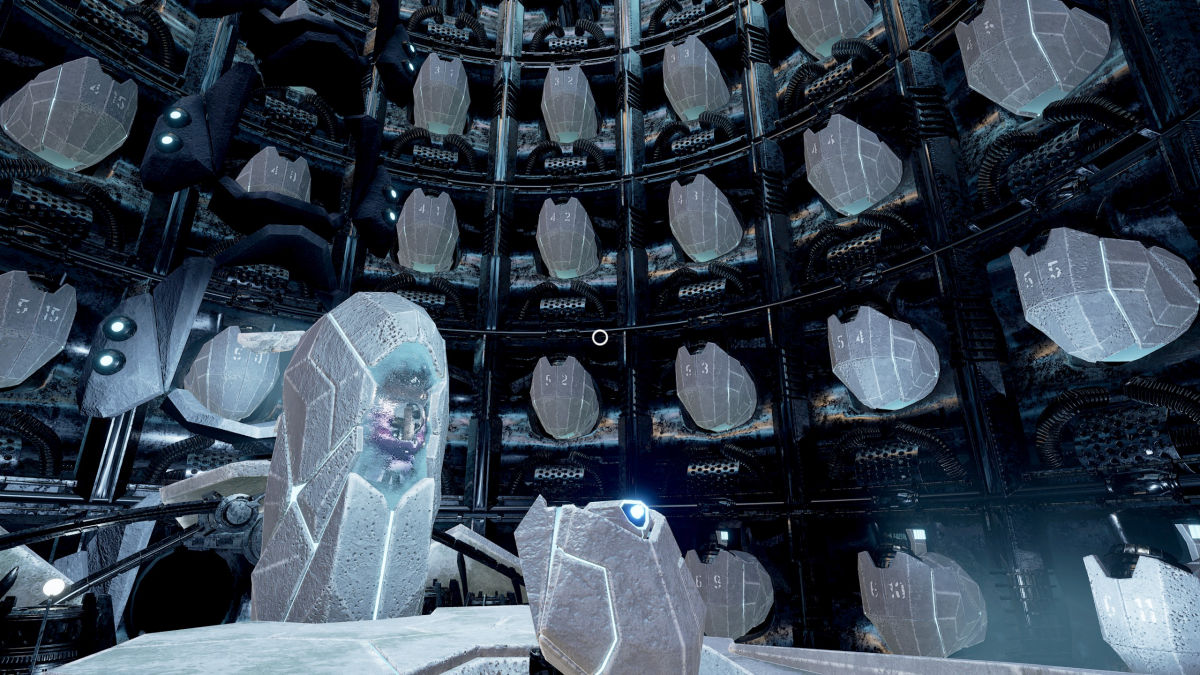
Nevertheless, I found the body of Rand. And of Caroline Farley, the creator of the community center.
The Maray dome led through several white alien cabins, some with teleporters to other domes. A human figure on strange screens told me to hurry up using peculiar grammatical rules. It wasn’t hard to guess that he probably wasn’t human at all.
And then I found the maze.
This was the notorious part of Obduction. If you have read some user comments about the game, you may already have heard all the rumors about it. It has been scolded for being ruthless and extremely annoying. I braced for the worst, but actually finding and seeing it felt strangely underwhelming at first. It was just four small spheres that could turn around in a bigger sphere. The small spheres had to be turned to create a contiguous passage through the big one. Didn’t sound so bad in theory, right?
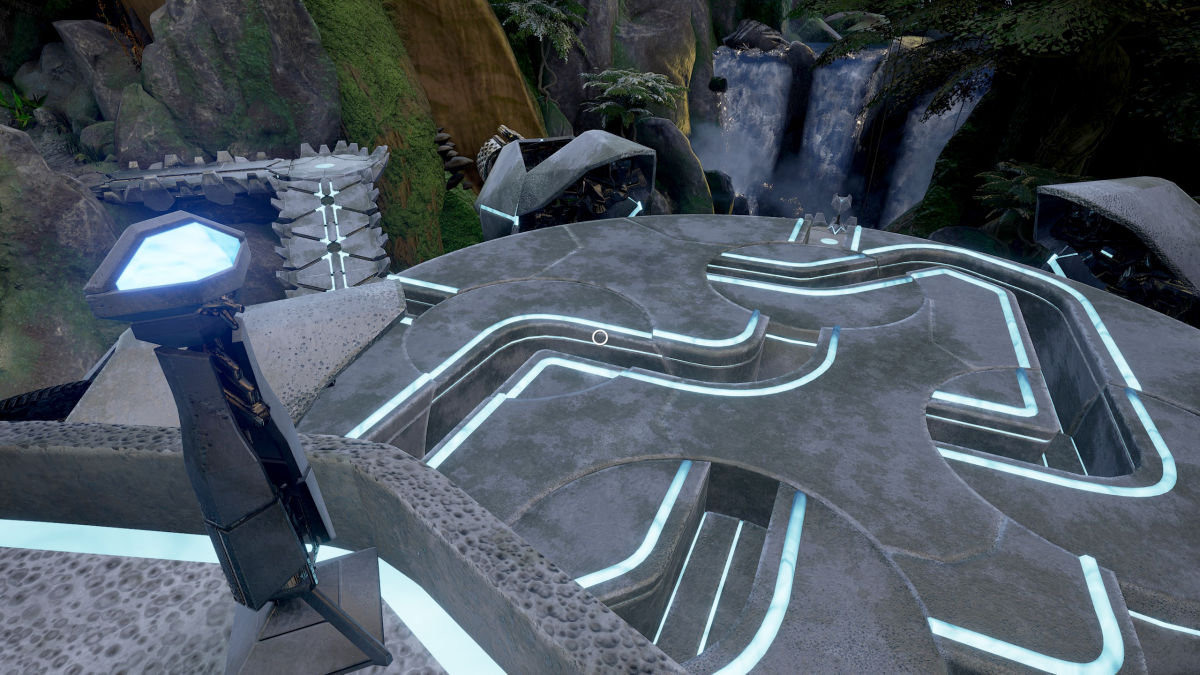
The reason this maze puzzle turned out to be a bitch was because of the multitude of mechanical steps involved, some of which had loading screens. First, an elevator had to be used up and down to either get an overview, enter the maze, or access the teleport room inside the small sphere. The sphere would then be teleported to the human dome (wait 15 seconds) and I had to run up a number of wooden walkways to press buttons for rotating the sphere. I then had to run down, teleport back (wait another 15 seconds) and take the elevator two floors up to run over and get an overview of the change.
All this was annoying and time consuming by itself, but it got multiplied by two more things.
The first was that the human dome already had a small sphere piece at the ready; a straight corridor. It then turned out that I also had to replace certain small spheres by substituting them via teleporting, then teleporting to Maray some other way and run back to see the result. The second was that I needed to get access to three exits from the bigger sphere.
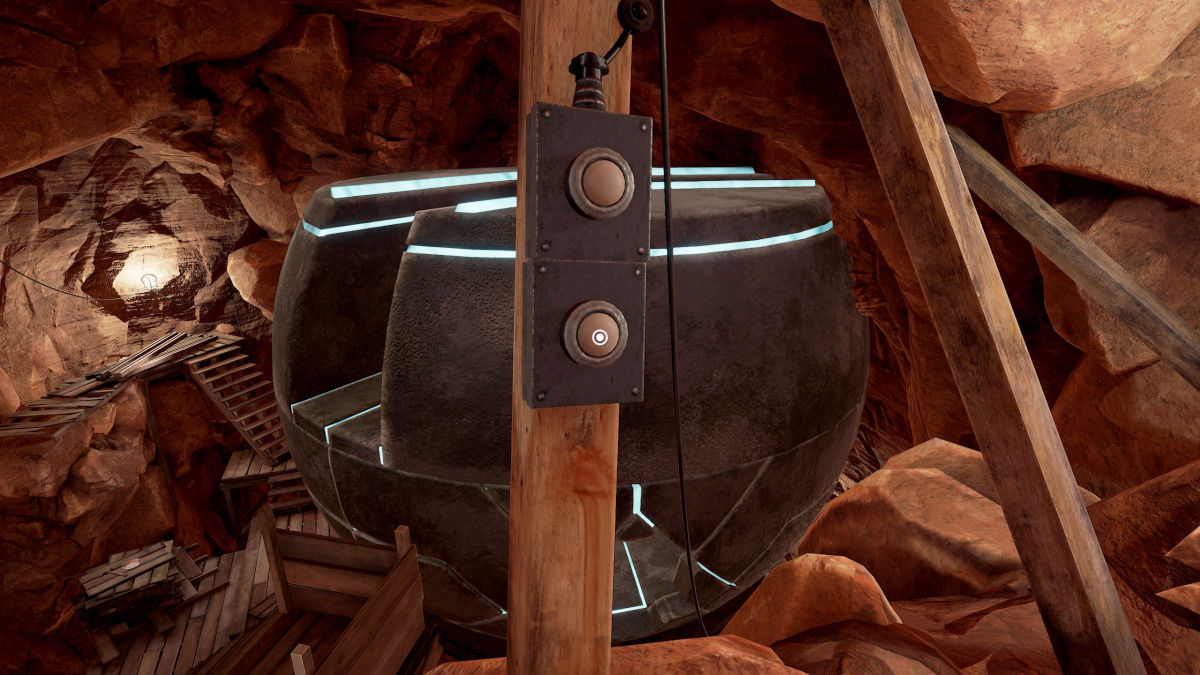
Yeah, that puzzle was exorbitant. The developers really overdid it, but I think they also underestimated how long the teleporting parts would take in the final product. Let’s just hope they learned their lesson.
Eventually I learned what the real goal of each dome world was – to find a tree with an orifice and activate a nourishing tube. This empowered the tree to generate power, swirling through its branches. The root cellar also gave way to the other dome trees through portals in space and time, but I had to find the tree myself the first time or the passage was blocked by a force field.
And this finally led me to being stuck for several hours.
I only needed to gain access to the last dome and its tree – the red Soria world for Mofang. But the only two teleporter points I knew didn’t work. The first one was nearby the Kaptar tree, in the shaft with swarming alien bees (luckily ignoring me) but it was missing a seed in the teleporter mechanism. And the other was destroyed by a blue laser to get rid of a lethal Mofang mine right next to it.
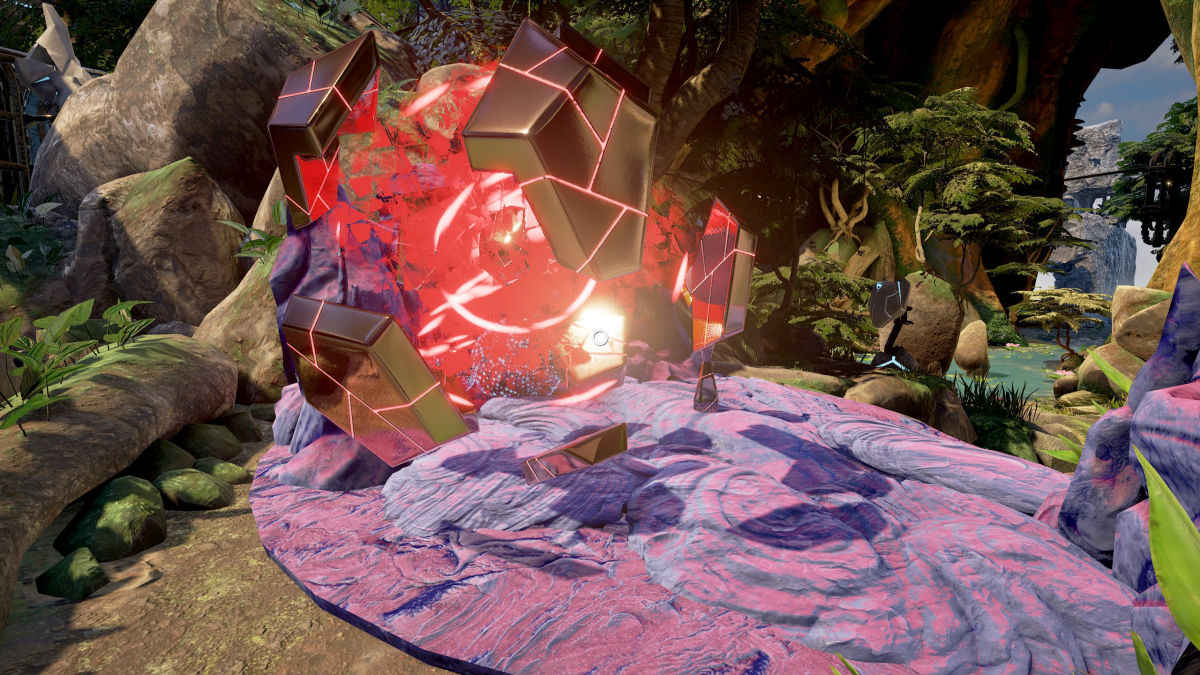
I traversed the many domes several times over and over, backtracking like I hadn’t been in several years, checking all corners. Nothing. I was starting to fear that the one destroyed by the blue laser was the one I was supposed to use – thus I was actually in a deadlock bug.
When I eventually discovered what I was missing, I felt like an idiot. It was totally my bad. That sluice walkway in the human area could be turned to gain access to the other side of the river. I had discarded that as a possibility much earlier in the game because the game wouldn’t allow me to turn a handle when the sluice was in an opened position. But when closed, it worked.
The game ended not long after that. I gained access to Soria and its barren and greased rocks. This was barely a dome world at all. I walked two or three lengths and there was the tree. After activating the tree, I used an elevator to the top of a tower and blew up a surge buoy area by hitting a trigger to dynamite. C.W. came out of his hiding and commented how the empowered quartet of trees now teleported us home.
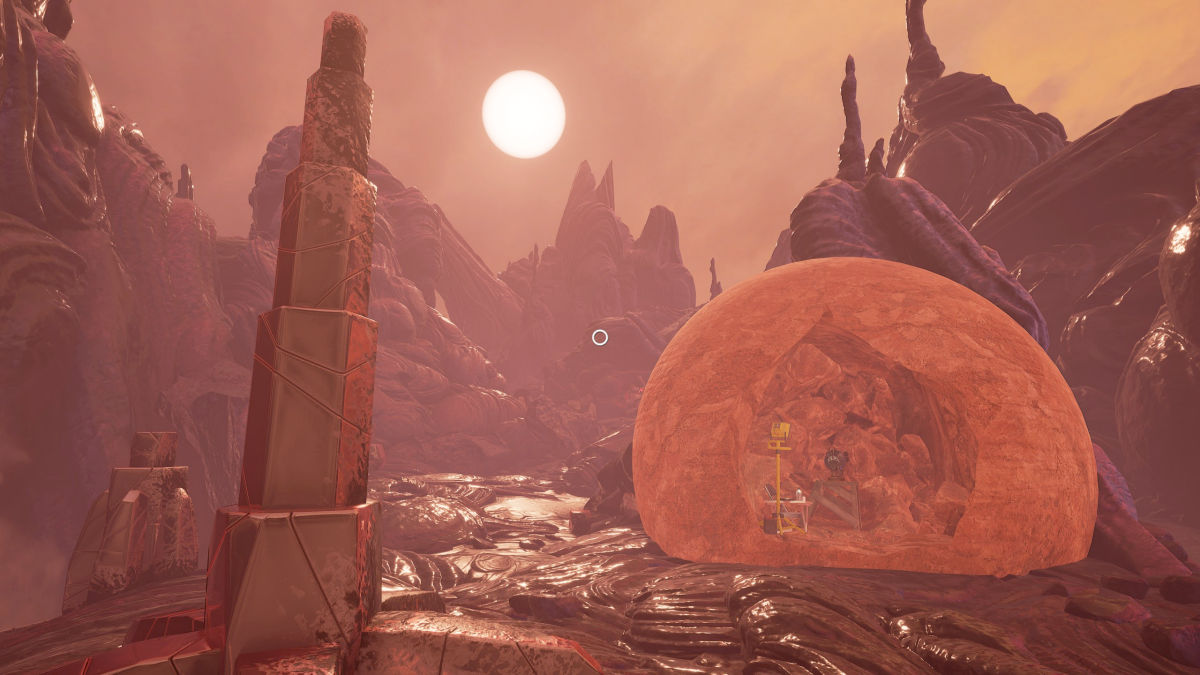
There were two endings at this point, depending on if the state of a battery close by was enabled or not. If enabled, the entire dome teleported to Arizona in the midst of a devastating sandstorm. Bad ending. But disabling the battery teleported all domes to a lush wonderland and everyone was happy.
Luckily it was easy to see the second ending. Load, go to battery, disable, go to tower, boom.
The game later got support for Virtual Reality, and I must say this is the first time I’ve ever felt like missing out. I imagine it must be great playing this game with a decent VR headset.
| TitleLength | Dates | Diff / Cht | Save | Score | |
|---|---|---|---|---|---|
|
Obduction
2016 Cyan Worlds
21h
7 |
2019-05-20 2019-05-27 |
8
|


